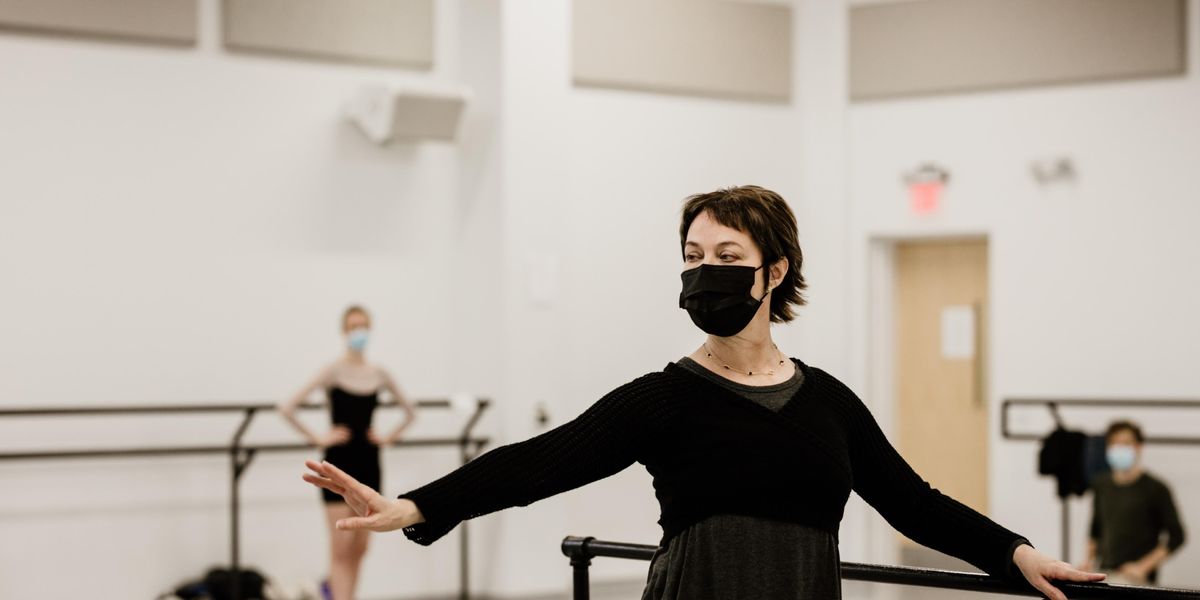Susan Jaffe Reflects On Taking the Reins at Pittsburgh Ballet Theatre During a Pandemic
No one would blame Susan Jaffe if she wanted a mulligan on her first season at Pittsburgh Ballet Theatre. Taking over from longtime artistic director Terrence S. Orr in the middle of 2020 upended any expectations of a smooth transition into her first artistic directorship. Nonetheless, since starting at the post in July, she’s tackled problems raised by the pandemic head-on, getting the dancers back in the studio with COVID-19 protocols that exceeded AGMA union guidelines, and then getting them back performing in virtual productions of A Midsummer Night’s Dream, The Nutcracker and more.
Since you came to the position during a pandemic, do you feel you have gotten the full artistic director experience yet?
Yes and no. I have done everything I am doing now in my former job as dean of dance at University of North Carolina School of the Arts, it is just the timeline has been crunched because of the pandemic. What would normally take a much longer runway now has a short diving board.
How has the recent purchase of a mobile outdoor stage impacted the company?
Last September, with precautions, it allowed us to perform for select audiences that were so happy to experience live dance. It will also be used for our future outdoor-series performances, and potentially for fundraiser events—to perform in public parks, parking lots and in collaboration with other organizations to reach more people in more areas around the region.

Courtesy Jaffe
What has been your approach to company income during the pandemic?
Donations, mostly, with some ticketed events. When we put out our virtual Fireside Nutcracker, we asked viewers for donations. We also reached out to corporate sponsors and received some strong support there. This past fall we did some private performances for patrons in return for already purchased subscriptions. Our spring outdoor series will be a ticketed event for existing patrons and newcomers.
What’s next?
This spring we plan to release a virtual program that was filmed at WQED’s historic Fred Rogers Studio in Pittsburgh. And in May and June we will present a new open-air series with works from Annabelle Lopez Ochoa, Sasha Janes and Gina Patterson, as well as Don Quixote, Sleeping Beauty and Le Corsaire pas de deux.
PBT has given more opportunities to female choreographers in recent years. Will you continue that trend?
For my first programmed season [2021–22], we will be celebrating female choreographers with works from Helen Pickett, Jennifer Archibald, Aszure Barton and others, along with my Swan Lake.
Beyond the pandemic, 2020 brought to the forefront issues of race and inclusion. How has that affected your priorities?
We have made changes to our hiring process to promote a more diverse candidate pool by instituting our own “Rooney Rule” [the policy created by the late Pittsburgh Steelers owner Dan Rooney that requires NFL teams to interview one or more candidates from underrepresented groups for certain job openings]. We have also changed our website to include reader-friendly alternate text on images and closed captioning on videos. In addition, we are providing an ASL interpreter in our adaptive dance classes and making audio-described versions of our playbills available during performance runs.
Will you program works with political messaging?
While I think it is great that others want to do works surrounding political activism, it is not for us.






